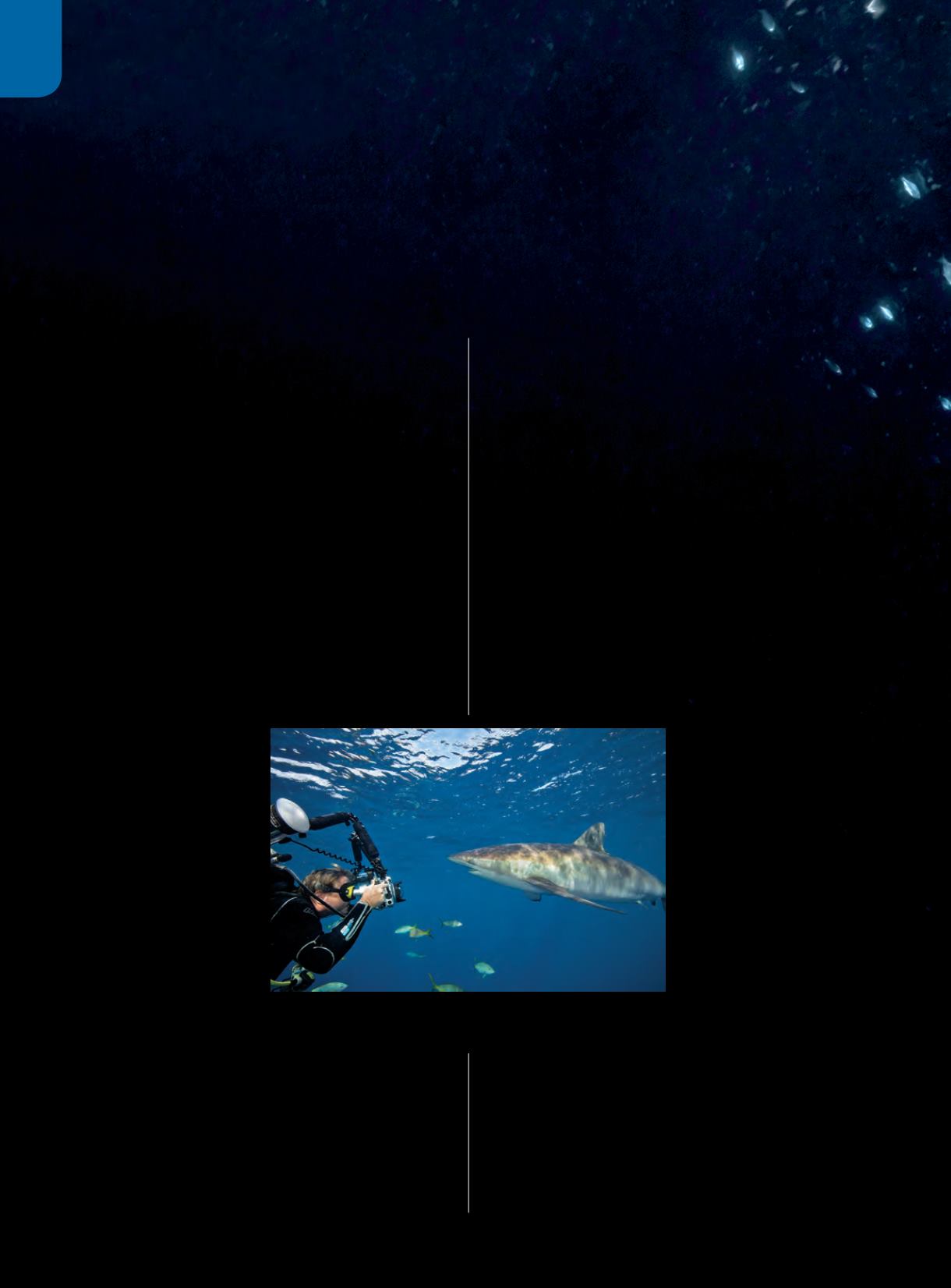

IMAGING
SHOOTER
92
|
FALL 2016
M
aybe there was something in
the water. Douglas David Seifert
learned to swim at what is
now one of the most revered
macrophotography destinations
in the United States: the Blue
Heron Bridge in Riviera Beach,
Fla. In the early 1960s Palm
Beach County was an absolute paradise; there were very few
dive shops and hardly any tourists who were interested in
viewing the near-shore underwater world through a facemask.
But Seifert’s childhood obsession was doing just that while
growing up on Singer Island, Fla. He went deep-sea fishing
with his father every weekend and had aquariums at home for
which he collected invertebrates and tropical fish. He became
a keen observer of fish behavior at an early age.
Although Seifert failed the classroom portion of his first
scuba class at age 12 — the math involved in the dive tables
was too much for him at
the time — later in life
he overcompensated and
became a scuba instructor,
actually teaching the math
that had once confounded
him. His immersion in
the dive industry brought
him in contact with one of
the early icons of marine
conservation in South
Florida, Norine Rouse.
“Take only pictures, kill only
time, leave only bubbles”
was her mantra, and Seifert
was her protégé. He had
great admiration for her, whom he called “this funky, crazy,
fearless 60-something-year-old woman running a dive shop.”
He recalled that she was not a fan of shark baiting, but at
that time there might be 20-30 bull or lemon sharks on a
dive even without using bait. This was also a time when any
given day diving Palm Beach County would reveal 12–24
turtles, mostly loggerheads. Rouse would dive with a buffing
pad, and the turtles would recognize her at a distance and
swim right up to her to have their shells cleaned. She had a
true rapport with marine life. Her passion for the welfare of
marine life was infectious, and helped shape Seifert’s lifelong
commitment to conservation issues.
Wanderlust and an ambition to sell TV and movie scripts
in Hollywood drove Seifert west. Soon disenchanted with the
entertainment industry, he sold everything he owned to buy
an around-the-Pacific ticket, back when such things existed.
That meant he could go somewhere such as Australia, spend
a few weeks (or months) and then hop on another jet to Fiji
or wherever. His parents gave him a Nikonos camera system
as a going-away gift, though he knew very little about how
to use it. While in Sydney, he wandered into the Dive 2000
store and met underwater photographer Kevin Deacon, who
fortuitously offered lessons to the uninitiated.
“In the film days, learning underwater photography
without instruction was a very slow and unforgiving process,”
Seifert recalled. “Kevin accelerated my learning curve, as did
a book I read almost daily
for four months:
Howard
Hall’s Guide to Successful
Underwater Photography
.
Howard and I have since
become good friends, but I
doubt he’ll ever know how
meaningful that book was to
me at that time in my life.”
Deacon’s instruction proved
invaluable when Seifert
dived with great white sharks
at Dangerous Reef, South
Australia, guided by the
incomparable Rodney Fox.
At the time, fewer than 100
people in the world had ever dived with great white sharks.
Some time later, back in Florida, Seifert met Doug Perrine
(see Shooter, Fall 2013) and went with him on a trip to the
Azores. Armed with a Nikonos RS and a 20-35mm lens,
Seifert managed to get some underwater photos of sperm
whales at a time when very few such images existed. He
showed them to the publishers of
Ocean Realm
, who happily
agreed to publish them along with an article about his
Douglas Seifert photographs a silky shark in Cuba’s
Jardines de la Reina.
THE ENDLESS SUMMER OF DOUGLAS SEIFERT
S H O O T E R
P H O T O S B Y D O U G L A S S E I F E R T ; I N T R O D U C T I O N B Y S T E P H E N F R I N K
STEPHEN FRINK
















